
The basic premise in the understanding of our origins, and the properties of all the planets we have studied this term, is that natural forces created and shaped the Solar System. And that there is a continuity to that process, i.e. it is not a sequence of random events.

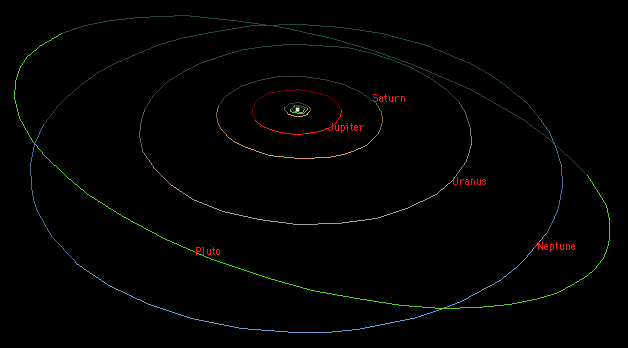
Large-Scale:
Small-Scale:
The above is not to ignore the fact that a great deal of evolution occurred in the Solar System after it formed (see below). For example, the origin secondary atmospheres of the terrestrial worlds underwent a large amount of chemical processing (Venus was baked, Mars was frozen, Earth developed life). There was also orbital evolution as well, rings were formed, moons captured, tidal locking between worlds (e.g. Pluto and Charon). So the Solar System is not a static system, it is dynamic.
How does one test a hypothesis?
To answer scientific questions requires the formulation of a hypothesis. The hypothesis is tested against the facts to look for contradictions that rule out or require modification to the hypothesis. Note that the process of hypothesis formulation and then theory building is a lengthy, career dependent operation. So the sociology of science requires that a hypothesis be tested and confirmed by many scientists since the creator of the hypothesis has a strong psychological attachment to his work.
Encounter Hypothesis:
One of the earliest theories for the formation of the planets was called the encounter hypothesis. In this scenario, a rogue star passes close to the Sun about 5 billion years ago. Material, in the form of hot gas, is tidally stripped from the Sun and the rogue star. This material fragments into smaller lumps which form the planets. This hypothesis has the advantage of explaining why the planets all revolve in the same direction (from the encounter geometry) and also provides an explanation for why the inner worlds are denser than the outer worlds.
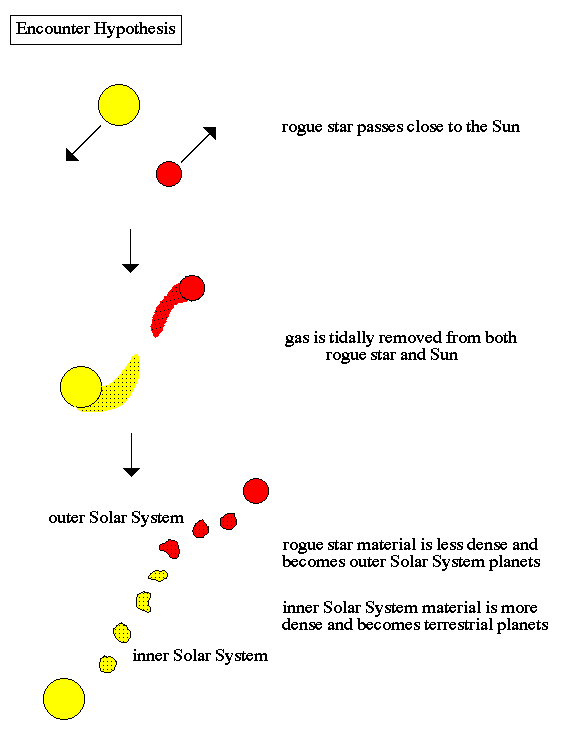
Nebular Hypothesis:
A second theory is called the nebular hypothesis. In this theory, the whole Solar System starts as a large cloud of gas that contracts under self-gravity. Conservation of angular momentum requires that a rotating disk form with a large concentration at the center (the proto-Sun). Within the disk, planets form.

Protoplanet Hypothesis:
The current working model for the formation of the Solar System is called the protoplanet hypothesis. It incorporates many of the components of the nebular hypothesis, but adds some new aspects from modern knowledge of fluids and states of matter.
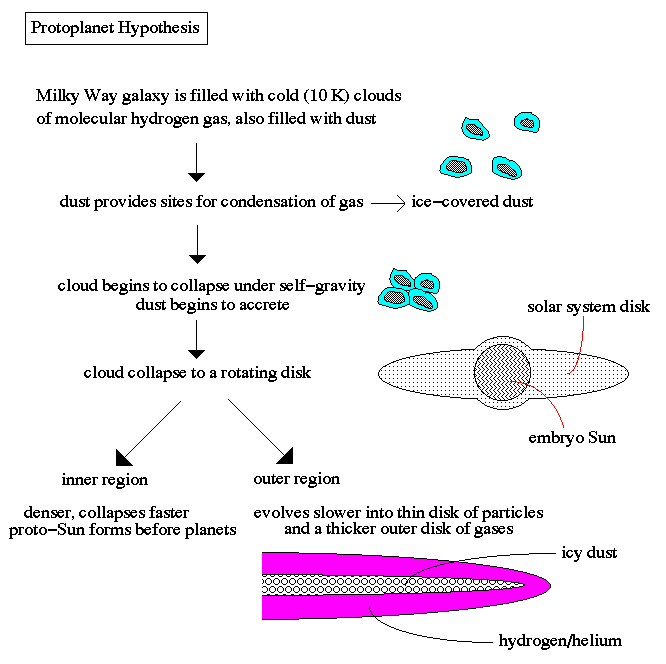
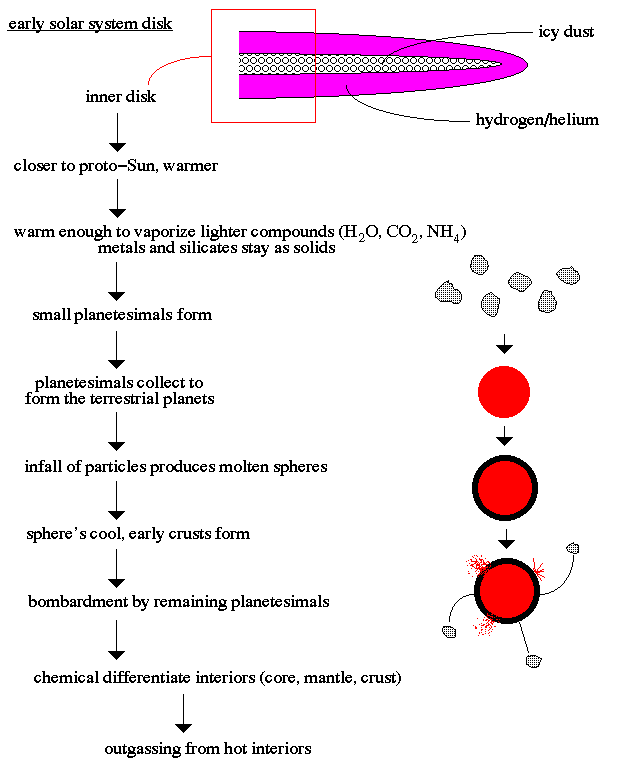
Notice also that the lighter compounds are vaporized in the inner Solar System. So where did all the outgassing material come from? The answer is comets that fall from the outer Solar System after the planets form.
Meanwhile in the outer Solar System:
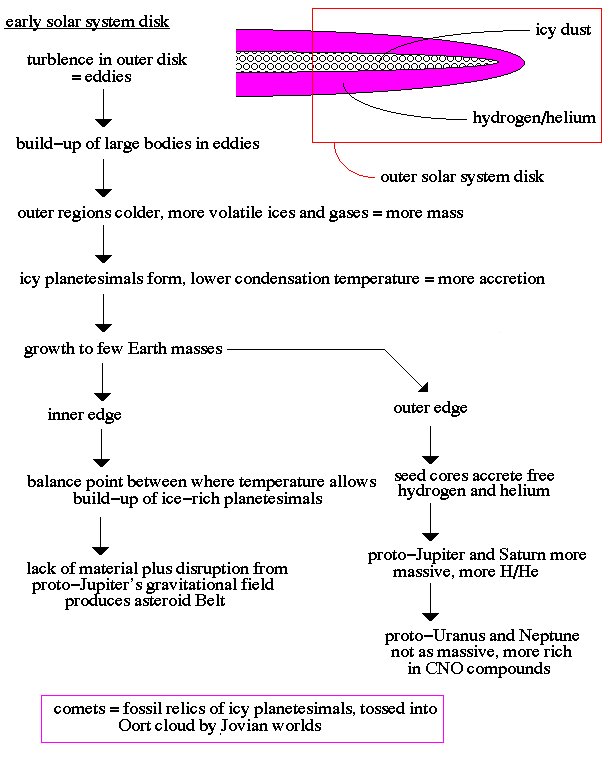
Any leftover large bodies were captured as moons or ejected by gravity assist into the Oort cloud. The start of thermonuclear fusion in the Sun's core created enough luminosity so that the remaining hydrogen and helium gas in the solar disk was removed by radiation pressure.
The only remaining problem is the distribution of angular momentum. The current explanation for the fact that most of the angular momentum is in the outer planets is that, by some mechanism, the Sun has lost angular momentum. The mechanism of choice is magnetic braking.
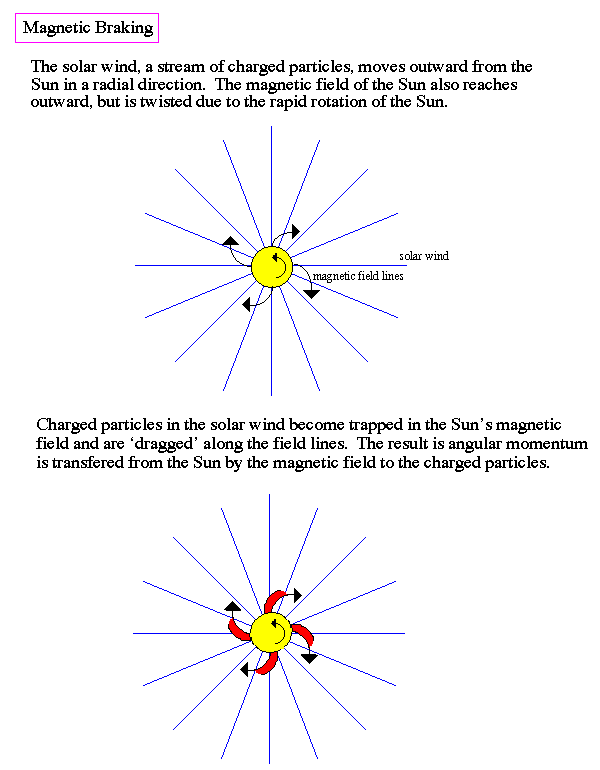
Migrating Planets:
The protoplanet hypothesis explains most of the features of the Solar System; however, the outer solar system is still strange, especially the properties of Pluto/Charon. One explanation is that the Solar System was not born in the configuration that we see today. That the planets in the outer Solar System migrated to their present positions.
Migration requires some interaction between the planet and a fairly large body or the gravitational forces are too weak. Early in the formation of the Solar System, there were lots of Moon-sized to Mars-sized bodies, especially in the outer SS. A large planetesimal that crosses near Neptune will lose some energy, fall down near Jupiter, gain energy to be ejected into the Oort Cloud.

This will have the effect of decreasing the size of Jupiter's orbit, and expanding the size of Saturn, Uranus and Neptunes' orbits. As Neptune moves outward, it will beginning to perturb the orbits of the trans-Neptunian objects (large ice covered astroids of which Pluto/Charon are a member). This pushes Pluto/Charon into a highly eccentric, inclined 3:2 resonant orbit that it occupies today.
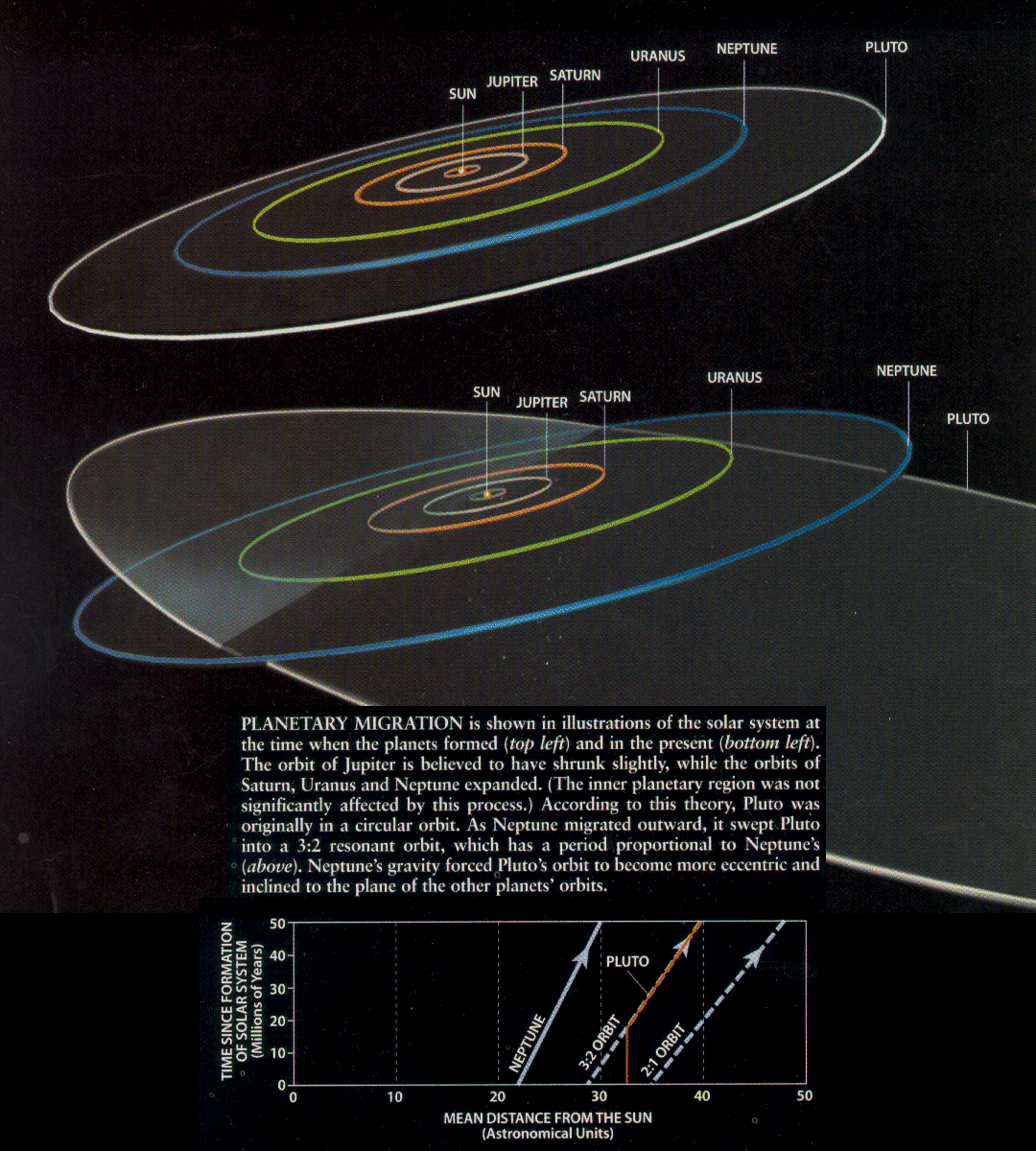
All the leftover planetesimals near Neptunes orbit are pushed into a torus shaped region called the Kuiper belt. Smaller planetesimals are thrown farther out into the Oort cloud.
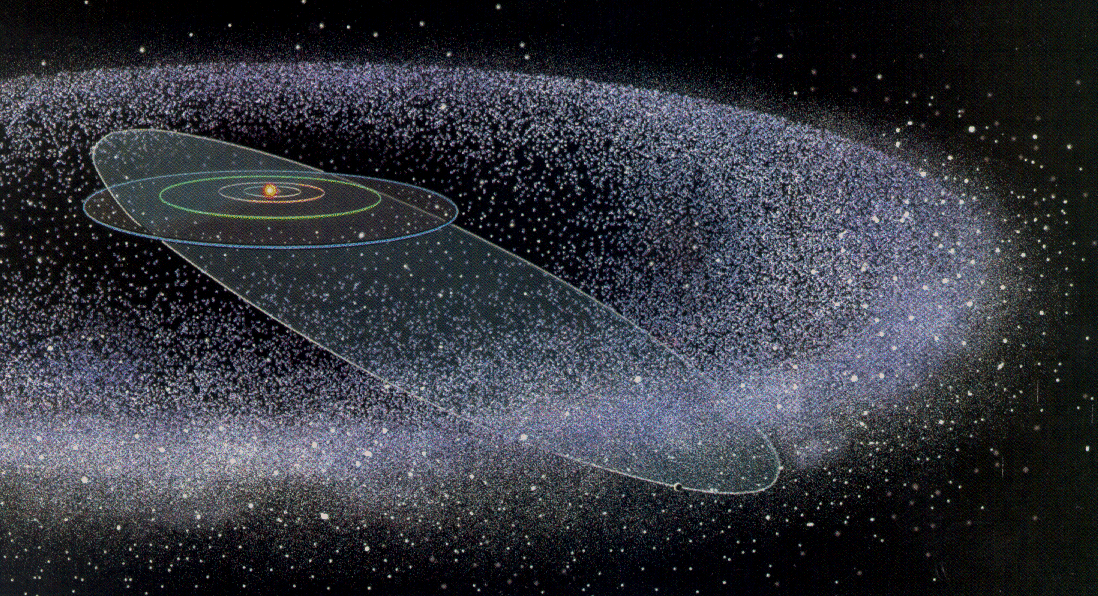
Habitable Zone:
One of the main ingredients for life as we know it is liquid water. Water exists as a liquid between 273K and 373K (unless the pressure is too low, in which case the water sublimates into gaseous water vapor). The region on the solar system (or any planetary system) where the temperature is in this range, is called the habitable zone.
Planets are in equilibrium with their surroundings: they are neither getting hotter nor colder. All planets absorb incident radiation from the Sun (this heats them up); to maintain equilibrium, they must radiate away the same amount of energy. The temperature of a planet can be approximated by assuming that it is a black body.
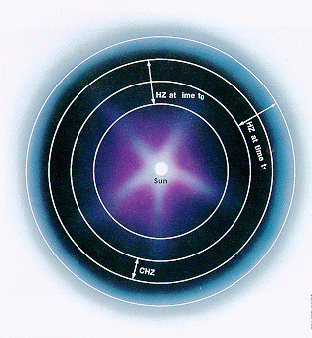
Planets do not absorb all incident light; much gets reflected. The albedo is the fraction of incident light reflected, not absorbed. The albedo of the Earth is 0.37; that of Venus is 0.65; that of the Moon is about 0.12 (clouds are highly reflective, basaltic rock is not). You must multiply the solar irradiance by the albedo. This extends the inner edge of the habitable zone inwards

Another complication is that planets are not ideal black bodies. Carbon dioxide, water vapor, and other atmospheric gases are opaque in the near-IR (where the peak of the black body emission would be). A less-than-ideal radiator must be hotter than a black body to radiate the same amount of luminosity. This extends the outer edge of the habitable zone outwards.

|
|

|